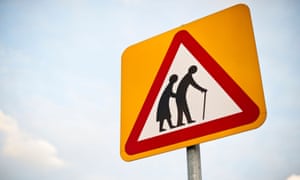Late night will never be the same. Having chopped my way through all 107 videos of the Commercials for Defunct Products playlist, I now stumble on to - or into - another LaBrea Tar Pit of mental distraction, the Oddity Archive. This one promises to suck me down like boiling mud, for it deals with a lot of my favorite obsessions: early TV, including my beloved DuMont Network; local commercials; public access programming (Stairway to Stardom, anyone?); early kiddie shows like the bizarre Ding Dong School;, TV signoffs featuring religious shows and "o I have slipped the surly bonds of earth"; and even the Emergency Broadcast System ("This is only a test. BOOOOOOOOOOOP" - doomsdayendofworldGODgetunderthebed).
This looks better than it really is, for it's very heavy on sarcastic, intrusive narration by "this guy", the one who presumably put it all together. Whoever he is, he hides behind a piece of cardboard with someone's picture pasted to it (picture changes with each video, I think). I'm assuming he's trying to avoid prosecution for using other people's videos. How anyone keeps control over any of that in this age of YouTube and Faceboob is anybody's guess. Though I see a lot of potential here, the constant interruption with wiseacre comments is jarring. I loved the 107 videos because they were just shown to us whole, unedited, punctuated with tons of really good, really long film headers (always love to make gifs out of those). Not only that, but there'd be 7 ads for Pream in one 15-minute video, and I wanted to see those ads, I really did.
I'll be picking my way through these videos and likely giffing bits of them, because gifs mercifully don't have sound (yet - there's another format taking over which has the same few seconds of sound repeating over and over, and which I think will ruin the whole thing by driving us nuts). What I see so far has real promise, and I don't know how he got hold of some of it (thus the cardboard picture). But it reminds me of those old monster movie late-night TV shows where every few minutes you'd hear a voice-over of some sniggering, sophomoric remark: "Oh! Look over there!", or "yeah, like the monster'd do THAT."
Meantime. . . crawls are great too, and this has to be among the most bizarre I've ever seen.
POST-BLOG HANGOVER. After perusing a few of these videos, I have to conclude they won't be worth exploring. It's not just the fragmentary nature of the clips, it's the annoying YATTER YATTER YATTER of "that guy" who won't shut up, constantly commenting and putting on irritating voices and doing the "Look how lame this is! Yeah, like we'd ever buy that! How obvious can you get!" etc. etc. I tried watching it without the sound, but it's just too disjointed, and most of the visual is taken up with the piece of cardboard with part of a guy behind it. Lame. Too bad, because there are a few gems here, but it's not worth the frustration.


















































